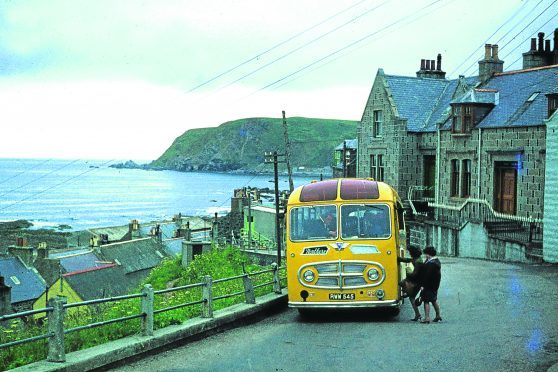The surprisingly colourful history of the north-east’s buses in the 1960s has been painstakingly detailed by a retired surgeon.
John Sinclair, 76, began taking photographs in 1961 with his 35mm camera, and thinks he was the only person during that time capturing the history of the region’s transport.
His sixth collection of pictures has now been published in an 80-page tome, The Buses of North East Scotland, following publications documenting transport in the Highlands and Western Isles.
“I suppose it goes back to childhood,” Mr Sinclair mused.
“At the age of seven my mother put me on a bus to school, and it was a 40-minute journey over 17 miles.
“I spent three years every day travelling to school and back on my own.
“As a wee boy, this started off my interest and it just became a hobby over the years.”
Both Mr Sinclair and his wife Ann regularly served as locum GPs in Ballater and Braemar.
Using a youth hostel in the city as a second base, he would routinely travel around the north-east either hitch-hiking or driving in search of the often brightly-coloured vehicles.
He said: “We’d come up and do a holiday weekend and deal with patients, and that gave me quite a bit of exposure to that part of the country.
“I liked seeing buses on the road or in scenic situations, rather than in bus stations and depots, so I try to go to the locality where they are running.
“I’m particularly interested in rural areas because it was a social service, so I combine the photographs with the actual history of the bus operation and the community it served.”
But with more than five decades of bus photography under his belt, and little sifting through his slides during that time, Mr Sinclair admits he has a large job ahead of him to complete further volumes.
“They are all over the place but I’ve probably got around 250,000,” he explained.
“I’ve built up this collection over the years and now, at this stage in my life, I have the time to write the books.
“It does take up quite a lot of the house, I must say.”
He added: “My wife is well used to it – she’s quite good about it, actually.
“She’s happy to sit in the car while we wait for the perfect bus to arrive at a perfect spot.
“So we do spend a bit of time together on this.”










